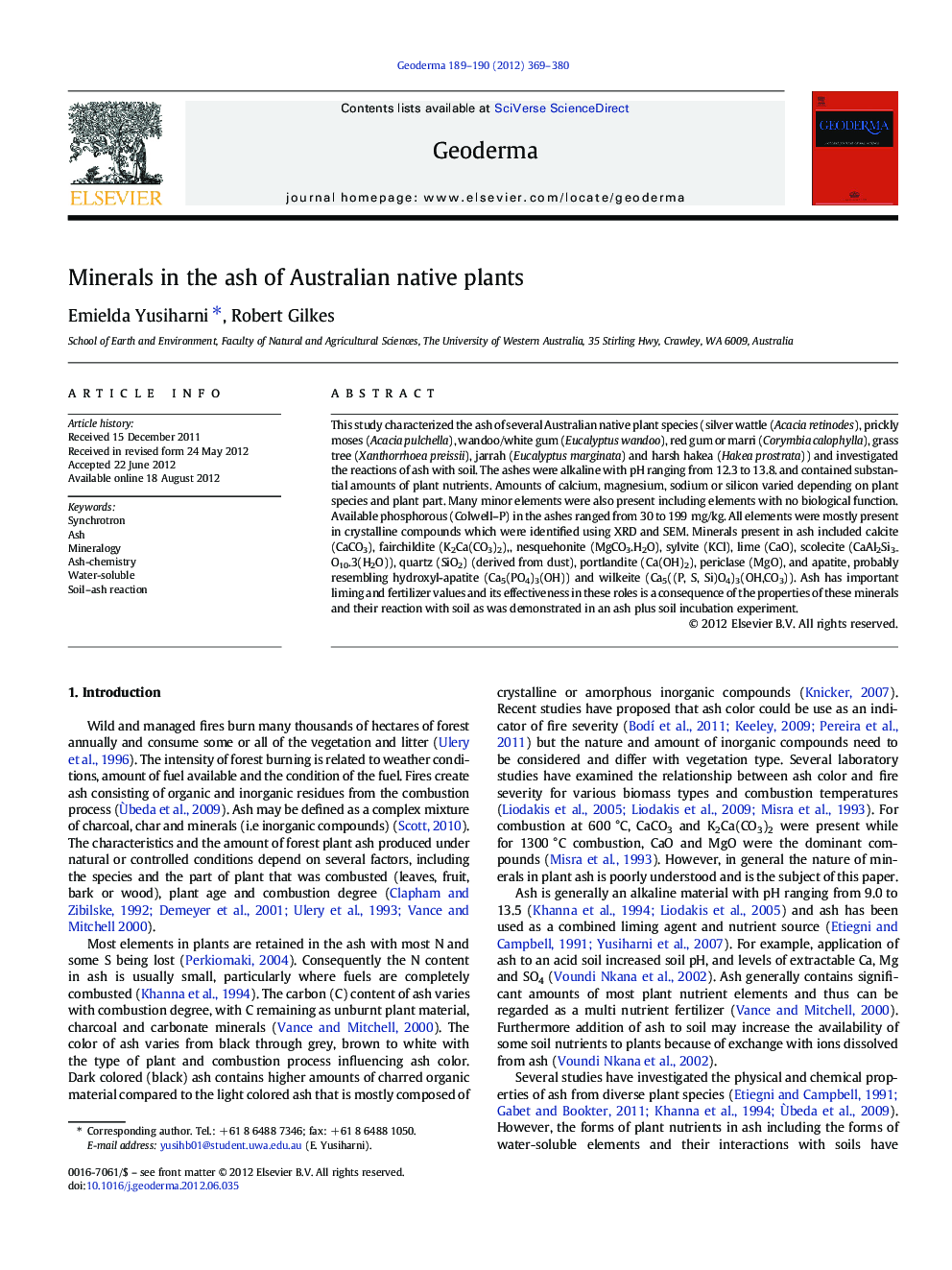| Article ID | Journal | Published Year | Pages | File Type |
|---|---|---|---|---|
| 4573610 | Geoderma | 2012 | 12 Pages |
This study characterized the ash of several Australian native plant species (silver wattle (Acacia retinodes), prickly moses (Acacia pulchella), wandoo/white gum (Eucalyptus wandoo), red gum or marri (Corymbia calophylla), grass tree (Xanthorrhoea preissii), jarrah (Eucalyptus marginata) and harsh hakea (Hakea prostrata)) and investigated the reactions of ash with soil. The ashes were alkaline with pH ranging from 12.3 to 13.8. and contained substantial amounts of plant nutrients. Amounts of calcium, magnesium, sodium or silicon varied depending on plant species and plant part. Many minor elements were also present including elements with no biological function. Available phosphorous (Colwell–P) in the ashes ranged from 30 to 199 mg/kg. All elements were mostly present in crystalline compounds which were identified using XRD and SEM. Minerals present in ash included calcite (CaCO3), fairchildite (K2Ca(CO3)2),, nesquehonite (MgCO3.H2O), sylvite (KCl), lime (CaO), scolecite (CaAl2Si3O10.3(H2O)), quartz (SiO2) (derived from dust), portlandite (Ca(OH)2), periclase (MgO), and apatite, probably resembling hydroxyl-apatite (Ca5(PO4)3(OH)) and wilkeite (Ca5((P, S, Si)O4)3(OH,CO3)). Ash has important liming and fertilizer values and its effectiveness in these roles is a consequence of the properties of these minerals and their reaction with soil as was demonstrated in an ash plus soil incubation experiment.
► Ash contains nutrients but vary depending on plant species and part. ► Ash has diverse mineralogical and morphological properties. ► Much of the P in ashes is present as the mineral apatite. ► Ash addition to soil increased pH, EC and Bic P values of soil.
